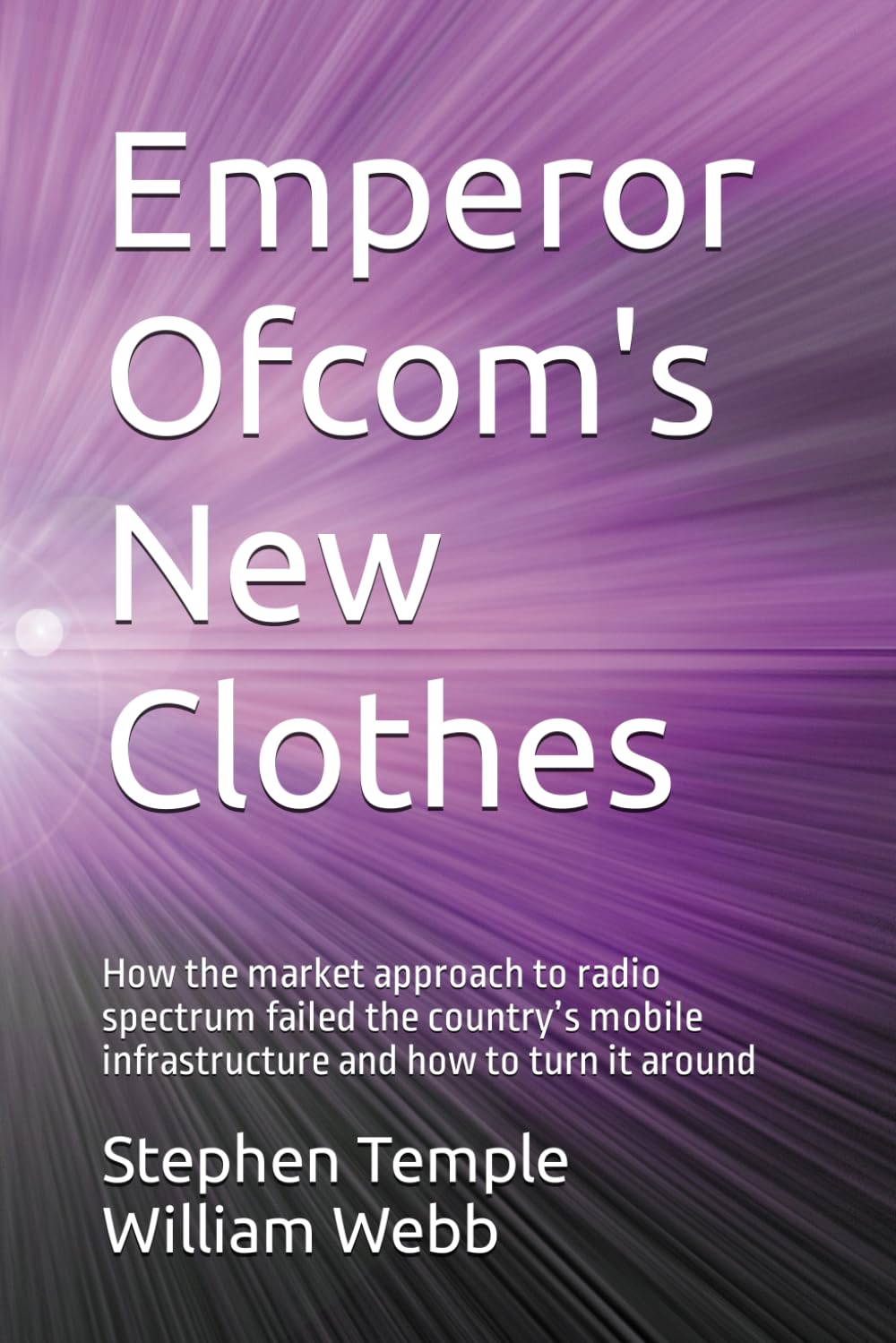5G – How to do everything wrong at the start and still emerge with a winner
An eye witness account of what went wrong and then went right for 5G
5G was conceived by a few visionaries around 2012 with a simple idea of a natural 10-year spacing between generations of cellular mobile technology. 4G had been rolled out in 2009, so the world would surely be needing a 5th generation technology by 2019/20. The timing was perfect. Everyone was still living under the shadow of the banking crisis and 5G was a perfect project to create optimism and renewal.
Not everybody was convinced at first. Shortly after the University of Surrey opened its 5G Innovation Centre it received a visit of top experts from the 3GPP standards body. They were visiting various places to form a view whether 5G was for real. I attended the meeting. The 3GPP team entered the meeting believing that further evolution’s of 4G would not leave any space for a new 5th generation radio access technology. They left convinced they would soon have to begin preparations for 5G. Passion is infectious.
No single person, company, industry body or country legally owned the 5G label. Over the next 18 months there were lots of gatherings of influential people in various settings that ranged from “5G huddles” to “5G summits”. Whilst there was ample good will to find common ground, the only thing everyone could agree on was that 5G would be rolled out by 2020. The head of the 3GPP technical competence centre was to note wryly at a subsequent 5G conference that nobody knew what 5G was, but it would be rolled out in 2020.
The 2020 launch date constrained 5G to what could be rolled out by 2020. That did not put a brake on various parts of the research community making expansive claims for the impact of 5G. Serious money was starting to flow into 5G research and nobody was going to show any lack of imagination in bidding for grants. The marketing departments of large companies started to engage. They stoked up the media who, in turn, went into overdrive. A huge disconnect opened up between the media perception of 5G and the practical reality of launching something by 2020.
Meanwhile, the 5G incubator hummed away, ideas were sucked in, but no competitive mechanism existed to play-off divergent visions. The result was something dressed-up as a single vision but in fact embraced elements heading in quite different directions. When I took stock of where things were in 2013 I could summarise the purpose of 1G, 2G, 3G, and 4G in a single word (cellular, digital, multimedia and broadband respectively) but I needed at least five words to summarise the purpose of 5G.
Over the period 2012-2015 the component suppliers were particularly well organised. Samsung had been waging a campaign since 2008 for the world to adopt a mmWave band at 28 GHz for 5G. The components industry saw this as a vast new market opportunity for them. The US FCC Chairman responded with enthusiastic support for 28 GHz for mobile use. Japan came into line. This unbalanced 5G. By 2015 the term 5G became universally synonymous with the use of 28 GHz to deliver 10 Gb/s…everywhere. “Everywhere” implied millions of 5G cells would be needed at an astronomic cost. This vision was carried forward on a tidal wave of media hyperbole.
The sceptics, and there were many, had become marginalised. One wrote a book “The 5G myth”. The European Commission were sceptics. They hedged their bets by re-purposing the 5G label to cover vertical industries modernising their use of communications, whatever the technology or frequency.
The make or break event for the 28 GHz-centric 5G vision was a World Radio Conference that took place at Geneva in November 2015. The mobile industry were confidently expecting it to deliver a global allocation at 28 GHz for 5G. It didn’t. European regulators chose instead to support the claims of the satellite industry. It was a disaster for mobile vendors. None of the existing mobile frequencies could accommodate the wide channels 5G technology needed. Without any frequencies the 5G technology was dead…at least in Europe.
The EU Commission re-doubled their energies on “vertical applications” under a 5G banner. However, European industry demanded the Commission did something about frequencies. They passed the problem onto Europe’s spectrum regulatory advisory body (RSPG). Regulators were aghast at the thought of allocating frequencies for a specific technology and least of all for one so over-hyped. But, having been given the question, they had to make an effort. Everybody was now looking for a solution. The University of Surrey 5G Innovation Centre supplied it. They proposed three 5G pioneer bands, one at 700 MHz for national coverage, one near to 28 GHz to provide capacity over small areas of exceptional high demand in the distant future and a sweet spot at 3.6 GHz as the mainstay for a new 5G infrastructure from 2020. The idea was tabled in March to an industry body (5GPPP), regulators liked it and by September it had become baked into the EU 5G Action Plan. The value of 3.6 GHz frequencies in the UK rocketed by 3000%.
The next bit of radical re-shaping of 5G took place in the standards body 3GPP. They have an impressive culture of “managed standards making”. There is also a fairly even balance of power between mobile operators and vendors. There was a bit of a tussle to resolve between those mobile operators who’d come late to 4G who wanted 3GPP to slow the pace on 5G and the US operators who wanted the work accelerated. The way-out ideas were soon shed, the 5G proposition simplified to three main component parts and the standardisation priority placed behind the one having the greatest industrial support – enhanced mobile broadband. This was coupled in Europe and many other countries with 3.6 GHz. The result was a new broadband infrastructure that could provide massive extra capacity to meet a relentless growth in demand and cope with a huge increase in the number of devices to be handled concurrently. Mobile operators set about planning the roll out of 5G networks. A clever wheeze of using the 4G control plane to control the new 5G capacity (Non-Stand Alone architecture) opened the way for fast deployment . Chip set and smartphone suppliers got busy. 5G was now on its path to success. The second of the 5G component parts was Ultra Reliable Low Latency Communications. This has got traction linked to Industry 4.0. The third component part is massive IoT. That component part of 5G was always going to lag awaiting 5G devices becoming very low priced commodity items.
3GPP, mobile operators and Europe’s spectrum managers snatched a successful launch of 5G out of what was otherwise heading towards a disaster. The new 5G infrastructure will allow “more of the same” but on a much vaster scale. But many politicians are still believing in the trans-formative nature from just the 5G networks alone. This is due to media confusion arising from the same 5G label being used to describe new ways of using high capacity networks. It is the latter that will be transformative and where most of the value lays. Here there is much research still to do and a few big bets to be placed to bring the best of these transformative application ideas to market at scale. Evolving the 5G networks to a stand alone architecture may speed up the selected applications. The media also missed the switch of spectrum bands in most countries from the hopelessly uneconomic higher frequency (26-28 GHz) to a far more practical lower frequency. These information gaps have led to trouble for 5G.
The hyped-up “5G at 28 GHz everywhere” vision sowed the seed of a 5G health scare infodemic. It was also mobile history repeating itself. When the 1800 MHz frequency was first introduced for mobile use in 1989, it led to a health scare. Radio engineers had slipped into the habit of calling these frequencies “microwaves”. It was not a big mental leap to associate “microwave frequencies” with “microwave ovens”. Some scientists questioned whether enough was known about the health effects of using “microwaves” for mobile phones. The media did the rest, leading to the alarmist headline: “mobile phones fry your brains”. In 2015 the fanfare about new higher (28 GHz) frequencies everywhere caught the eye of some scientists, who questioned whether enough was known about the health effects of using such higher frequencies for mobiles. Social media did the rest, leading to one scientist suggesting that 5G will lead to the human race becoming extinct within seven generations…arguably an advance on having one’s brain’s fried immediately. It provided fertile ground for pranksters to spread the Covid hoax. This has lent an excuse to an anarchist fringe to vandalise base stations in the UK – oblivious to the fact that nobody in the UK is using higher frequencies anywhere for their 5G services. There has been similar problems in other countries. To see so many people in the UK protesting against something that doesn’t exist has the potential for a riveting sequel to the 2015 book “The 5G Myth”.
More bad luck descended upon 5G, this time from geopolitics. The US President has been influenced by the 5G hype and been thoroughly alarmed at the success Huawei has been having in many 5G markets. Behind the security concerns is a deeper US fear of the rise of China in the supply of telecommunication systems. From a cellular mobile industry perspective, Europe, Japan and the US have each had their turn in leading a cellular mobile technology revolution (2G, 3G and 4G respectively) and most would see China having a turn as a positive indicator of the truly open nature of the global cellular mobile industry. There is a real risk that Trump’s intervention may damage the massive scale economies that have enabled the mobile industry to deliver fantastic technology at prices affordable to almost everyone on the planet.
European governments, in particular, have no grounds to complain about a level playing field for their vendors. There has been decades of spectrum auctions that have financially gouged Europe’s mobile sector. The intransigence against industry consolidation has also hit investment capacity in innovation. These unhelpful industrial policies flow directly from the tightly focused “consumer interest” mandate governments have given their independent regulators. Europe has reaped what it has sown – cheap mobile calls for its consumers and an industrial base that has shrunk considerably from the global dominance it once had twenty years ago.
5G has been described by some as “a special generation”. It might be more aptly describe as “an especially unlucky generation” in its formative phase. 3GPP has to take a lot of credit for delivering such a complex technical standard on such a short time-scale. Europe’s spectrum managers should be thanked for stepping out of their comfort zone and delivering a perfect frequency solution. But the main secret of 5G’s success, as for the generations before, is the cohesiveness of the mobile operator community. No other industry sector has such a high percentage of high spending “customers” (who in many cases are also competitors with each other) all consistently agreeing to jump together into a new generation of mobile network technology.
Some mobile technology generations have certainly been more successful than others but none have failed. What other industry in a high tech field could claim a 100% success record over nearly 40 years? The combined financial power from this synchronised procurement is large enough to overcome many missteps along the way and provides a 100% guarantee of success that has underpinned investment confidence. The cellular mobile operators have a technology track record to be proud of.

